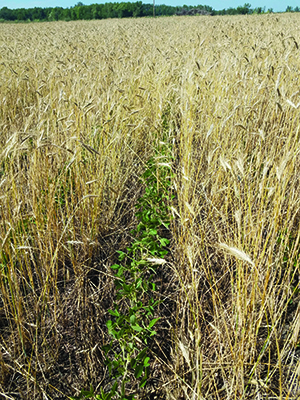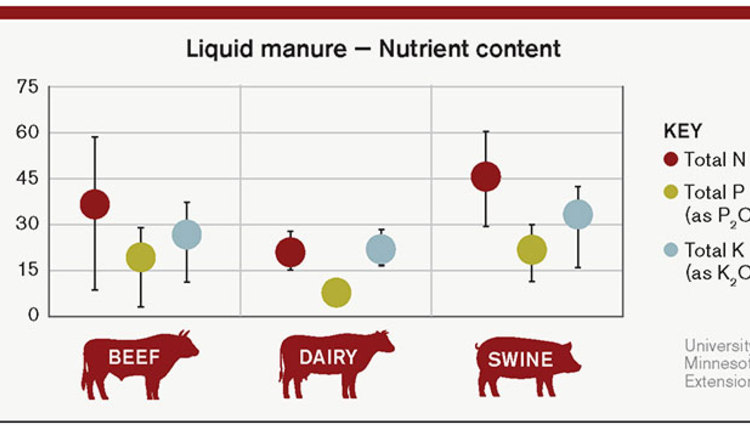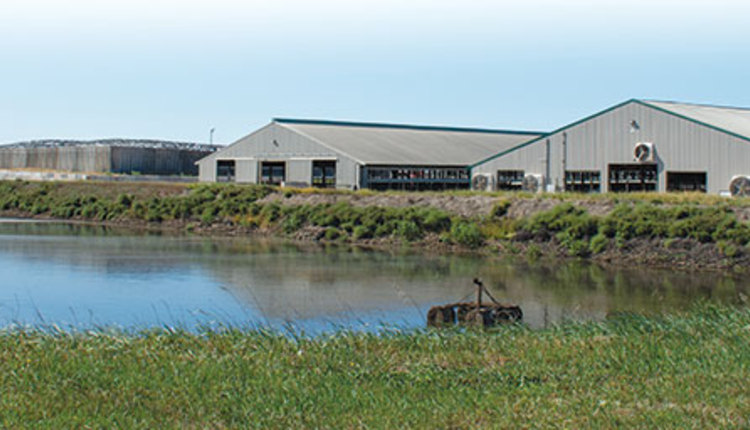
Between May 1 and July, 13 inches of rain fell at the University of Minnesota’s Northwest Research and Outreach Center in Crookston. This was about 3.5 inches greater than the 30-year average.
What started out as a near-normal season for rain took a sudden turn with 7 inches of rain in July. Quite literally, when it rained, it poured.
Falling with intensity
Many factors play into whether heavy rains lead to nutrient loss. Some of these factors are how much it rained, what soil type you have, what crop you grew, how much fertilizer you applied, how quickly it rained after you applied the fertilizer, and whether you have tile (or irrigation).
One of the key factors that determines if water will be absorbed into the soil or runoff the soil surface is rainfall intensity. The soil can only absorb water so fast. This is the soil’s infiltration rate. If rainfall intensity exceeds the soil’s infiltration rate, you will get ponding or runoff.
Infiltration rate depends on both the soil’s physical properties (texture, bulk density, and so forth) and the soil’s existing moisture content when it starts raining. Soils that are more coarse in texture absorb water faster than finer textured soils. Drier soils absorb water faster than wetter ones.
Management practices can have an effect on infiltration rate, too. Less compacted soils will absorb water faster than more compacted ones. In general, no matter what the soil properties are, if soil moisture is high and you get a high-intensity rainfall event, then conditions are right for surface runoff.
By my estimation, from May through July, rainfall intensity in Northwest Minnesota’s Red River Basin region likely exceeded infiltration rate on six days for sandier soils and up to 21 days on our more clay soils. That means between six and 21 chances for ponding and surface runoff.
Impacts the environment
Nutrient loss in surface runoff tends to be more of an environmental concern than a soil fertility concern. Surface runoff, ponding, and flooding can both damage crops and erode the soil surface, but it will not collect plant-available nutrients in a high enough volume to starve the crops.
Surface runoff typically does not carry high amounts of nitrogen with it, but it can move high amounts of sediment-bound phosphorus into streams and waterways. Although this phosphorus is tightly bound to particles and not plant-available in the field, this can change once it moves into waterways and is exposed to different biological drivers. For example, phosphorus becomes more available at neutral pH levels. This means that phosphorus that is unavailable in the highly calcareous, high pH soils of western Minnesota can become available downstream.
Excessive phosphorus availability in lakes and streams can lead to harmful algal blooms. These harmful algal blooms are a critical environmental concern that threaten our use of freshwater lakes for fishing, drinking, or recreation.
Nutrient loss concerns are not only an issue with surface runoff. Once rain makes it into the soil, then nutrient loss from leaching becomes a potential problem. While surface runoff leads primarily to phosphorus loss concerns, leaching is more of a nitrogen loss issue. Excessive nitrogen in the form of nitrate in drinking water poses a health risk to babies and pregnant women.

For nitrogen, the soil moisture that comes with rainfall drives the mineralization process. For phosphorus, we see pulses of loss shortly following rainfall. This can temporarily elevate nutrient availability for the crop, but nutrients will move along with water as it leaches away.
Help nutrients stay put
Although we cannot control the weather, we can try different water strategies to improve our chances of keeping nutrients in the field. These strategies include managing tile drainage discharge with controlled drainage and implementing cover crops and reduced tillage into our cropping system.
Controlled drainage is a practice that uses a structure installed at the outlet of a subsurface drainage system to physically slow or stop the flow of water out of the field. This practice keeps water in the field for a longer period and has been shown to reduce downstream nitrogen and phosphorus loading without reducing crop yield.
Experimenting with cover crops or reduced tillage to see if those practices help improve soil structure is another strategy. Improved soil structure can increase the available pore space for water to be absorbed into the soil. Cover crops promote improved soil structure by adding organic matter and living plant roots into the soil to help keep soil in place between cash-crop growing seasons. Reduced tillage helps to stabilize soil aggregates and keeps the pore spaces formed by those soil aggregates from breaking apart.
A low level of nutrient loss may be unavoidable if heavy rains are in the forecast. Even so, it is important (and economical) to optimize soil fertility in addition to implementing other water management practices. When we are looking at soil as a system, fertilizer management is only one aspect keeping nutrients in the field and out of downstream waterways. We may not have any silver bullets for improving nutrient use efficiency, but we do have options.
This article appeared in the November 2020 issue of Journal of Nutrient Management on pages 14 and 15.
Not a subscriber? Click to get the print magazine.




